home | fall garden | waterfall, pool & stream
Pipevine Swallowtail
Pipevine swallowtail's name comes from its primary host plant, pipevine, and the shape of the hind wings of the adult butterfly. Its hind wings have appendages similar to the tail feathers of swallows. Found mostly in warm climates throughout North America, this species favors open woodlands, meadows, forests, and anywhere there is an abundance of pipevine. The adult pipevine swallowtail is black in color with iridescent blue hind wings. Adult females will lay clusters of 1 to 20 reddish-brown eggs on the underside of pipevine leaves. Larvae (caterpillars) hatch from the eggs and begin feeding on leaves, stems and seed capsules of the host plant. After a few weeks of eating, the larvae will transform into a chrysalis (cocoon). It will remain in this stage throughout winter. In the spring, the adult butterfly emerges from the chrysalis. Since the larvae feed on the toxic pipevine plant, they become toxic and that toxin is passed to the adult butterfly. There are several butterfly species that actually mimic the look of the pipevine swallowtail in hopes that their predators think they are toxic as well. The pipevine swallowtail butterfly will seek nectar from flowers such as lilac, azaleas, phlox, and petunias. They learn to quickly associate certain flower colors with nectar supplies, which may make them as intelligent as honeybees in this regard.
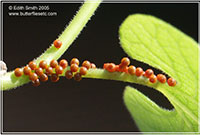 |
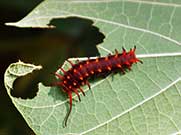 |
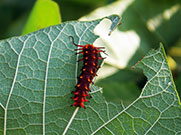 |
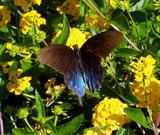 |
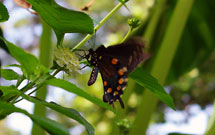 |
